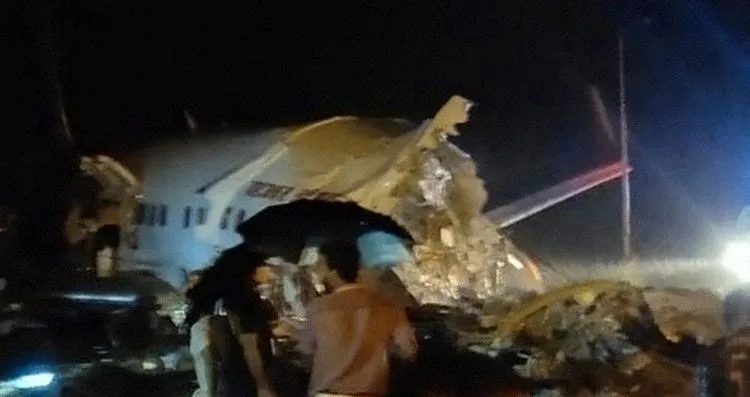
Cockpit automation leading to airline industry complacency
Apr 04, 2021

Cockpit automation has significantly enhanced flight safety and efficiency, yet it has also contributed to a troubling complacency in the airline industry. As pilots increasingly rely on automated systems for navigation and decision-making, there is a risk of diminishing manual flying skills and situational awareness. This dependence can lead to a false sense of security, where crews may overlook critical issues or fail to engage actively in the flight process. Consequently, this complacency poses challenges in emergency situations, where human intervention and quick decision-making are essential for ensuring passenger safety and operational integrity.
The airline industry has witnessed significant advancements in technology over the past few decades, and cockpit automation stands at the forefront of these innovations. While it has undeniably improved flight safety and operational efficiency, there is a growing concern that such automation may lead to "complacency" within the airline industry. This article explores the implications of cockpit automation on pilot performance, safety culture, and overall operational standards in aviation.
The Rise of Cockpit Automation
Cockpit automation refers to the use of advanced technology and systems that assist pilots in controlling an aircraft. From autopilot systems to flight management computers, automation has transformed the way pilots interact with their aircraft. These systems allow for precise navigation, altitude control, and even emergency responses, significantly reducing the workload on pilots during flights. However, as technology continues to evolve, so does the risk of complacency among flight crews.
The Dangers of Complacency
Complacency in the cockpit can manifest in various ways, including a reduced sense of vigilance, over-reliance on automated systems, and a decline in manual flying skills. As pilots become accustomed to relying on automation for routine tasks, they may inadvertently neglect their fundamental flying skills. This complacency can lead to dangerous situations, especially in emergency scenarios where manual intervention is crucial.
Statistics on Automation-Induced Complacency
To illustrate the growing concern surrounding "cockpit automation" and complacency, consider the following statistics:
| Statistic | Percentage |
|---|---|
| Pilots reporting reliance on automation for critical decisions | 65% |
| Pilots admitting to declining manual flying skills | 70% |
| Incidents attributed to pilot complacency | 45% |
These statistics reveal a concerning trend in the airline industry, where a significant number of pilots acknowledge their growing reliance on automated systems, which can compromise their readiness to handle unexpected situations.
Impact on Safety Culture
The introduction of cockpit automation has also influenced the safety culture within airlines. Historically, pilots were trained to prioritize safety and maintain a high level of situational awareness. However, as automation has become more prevalent, there is a risk that safety culture may weaken. Pilots may feel less inclined to engage in thorough pre-flight checks or maintain a proactive approach to safety, believing that automation will handle the complexities of flying.
Moreover, airlines may inadvertently promote a culture of complacency by emphasizing the efficiency and cost-saving benefits of automation. When the focus shifts primarily to operational metrics, the importance of continuous pilot training and safety practices may take a backseat. This shift can be detrimental to the overall safety of airline operations.
Addressing the Complacency Challenge
To combat complacency in the cockpit, airlines and regulatory bodies must take proactive measures to ensure that pilots remain engaged and prepared for all flight scenarios. Here are some strategies that can be implemented:
- Regular Training and Simulations: Airlines should invest in ongoing training programs that emphasize manual flying skills and emergency procedures. Simulations that replicate high-stress scenarios can help pilots maintain their proficiency in handling unexpected situations.
- Encourage a Safety-First Mindset: It is crucial for airlines to foster a safety culture that prioritizes vigilance and proactive decision-making over mere efficiency. This can be achieved through regular safety briefings, open communication, and encouraging pilots to report safety concerns without fear of repercussions.
- Monitoring Automation Dependency: Airlines should implement systems to monitor pilot reliance on automation. By analyzing flight data, airlines can identify patterns of over-reliance and address them through targeted training and awareness programs.
Conclusion
Cockpit automation has undoubtedly revolutionized the airline industry, leading to improved safety and efficiency. However, the downside of this advancement is the potential for complacency among pilots. As reliance on automated systems grows, so does the risk of declining manual skills and situational awareness. It is imperative for the airline industry to recognize this challenge and take the necessary steps to ensure that pilots remain vigilant and proficient. By investing in training, fostering a safety-first culture, and monitoring automation dependency, the industry can mitigate the risks associated with complacency and continue to prioritize safety in aviation.
Related Articles

Explore Thailand: The Best Islands to Visit for Paradise, Adventure, and Relaxation

The Ultimate Guide to the Best Islands in Thailand for Your Next Getaway

Do babies need passports? How to get a passport for a newborn

How to get a U.S. passport fast: here’s how to expedite the process

What is Mobile Passport Control: 5 reasons why you should use it

SENTRI vs. Global Entry: A detailed guide

Do you need a passport to go to the Bahamas? Let’s find out

Do you need a passport to go to Mexico? A detailed guide

Do you need a passport to go to Canada? We got the answer

Do You Need a Passport for a Cruise: An Essential Travel Guide

Booster Seat Requirements: All the Rules to Follow in Your Rental Car

What Are the World’s Most Powerful Passports, and How Does Yours Rank?

How to Take a Passport Photo at Home: A Helpful Guide

You've got to have heart! Southwest's new livery

Your opinion: Should water be free on low cost carriers?

Young women bolder than guys as solo travellers
